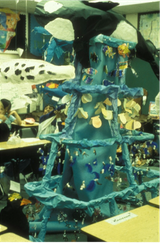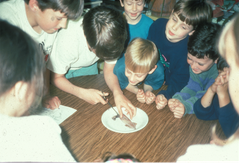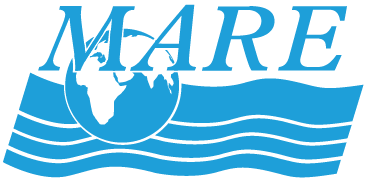5th Grade–Open Ocean

Download the Open Ocean Teacher Guide Now
Far from shore, where the ocean horizon touches the sky, is the vast region called open ocean. Equally home to microscopic plankton and titanic whales, this single, global ocean covers almost three quarters of Earth’s surface. Never still, winds and ocean currents move food, nutrients, animals, algae, ships, garbage…anything. Movement of ocean water also creates pockets of amazing productivity that can be depleted from overfishing.
Curriculum Overview
Activity 1: Apples and Oceans (3 Sessions)
Students work in pairs, using an apple and a circle graph to represent the planet. They carefully section the apple and the graph into wedges representing various critical resources on the planet.
Activity 2: Planet Ocean (2 Sessions)
Students participate in a wide-ranging brainstorm about what they already know, value, and enjoy about the ocean. They work in teams to explore a globe using a global exploration worksheet as a guide.
Activity 3: Waste Disposal (2 Sessions)
Students discuss their personal experiences with currents and then make predictions about the best and worst locations in the ocean to dispose of waste from imaginary countries. They test their ideas with a simple model of an ocean and continents.
Activity 4: Current Trends (2 Sessions)

Cooperative student groups examine the relationship between temperature, salinity, and density as the students rotate through three different activities and experiments set up as stations.
Activity 5: Ice Cubes (1 Session)
Temperature and salinity are combined for students to look at the interactions that create ocean currents. Students make predictions about whether ice cubes will melt faster in fresh water or salt water and explain their reasoning.
Activity 6: The Great Plankton Race (3 Sessions)
Students observe, sketch and categorize a diversity of plankton from video footage and transparency cutouts, and focus on the adaptations plankton have to slow down how fast they sink. Students then construct plankton models from materials of various shapes and densities to simulate adaptations which slow sinking.
Activity 7: Squids—Outside and Inside (4 Sessions)

Students work in pairs to dissect a squid and investigate its adaptations—its structure and how all the parts function together to allow the squid to survive and thrive in its open ocean environment.
Activity 8: Whale With Class (3 Sessions)
Students explore evolution, natural selection, and adaptation by examining the highly specialized features and behaviors of whales.
Activity 9: Build An Open Ocean (3 Sessions)
Students research an open ocean organism, complete a page for the class Field Guide, and participate in presentations to the class.
Students then transform the classroom into an open ocean as they create 3-dimensional organisms.
Download a session-by-session timeframe for teaching Open Ocean (PDF, 62KB)

